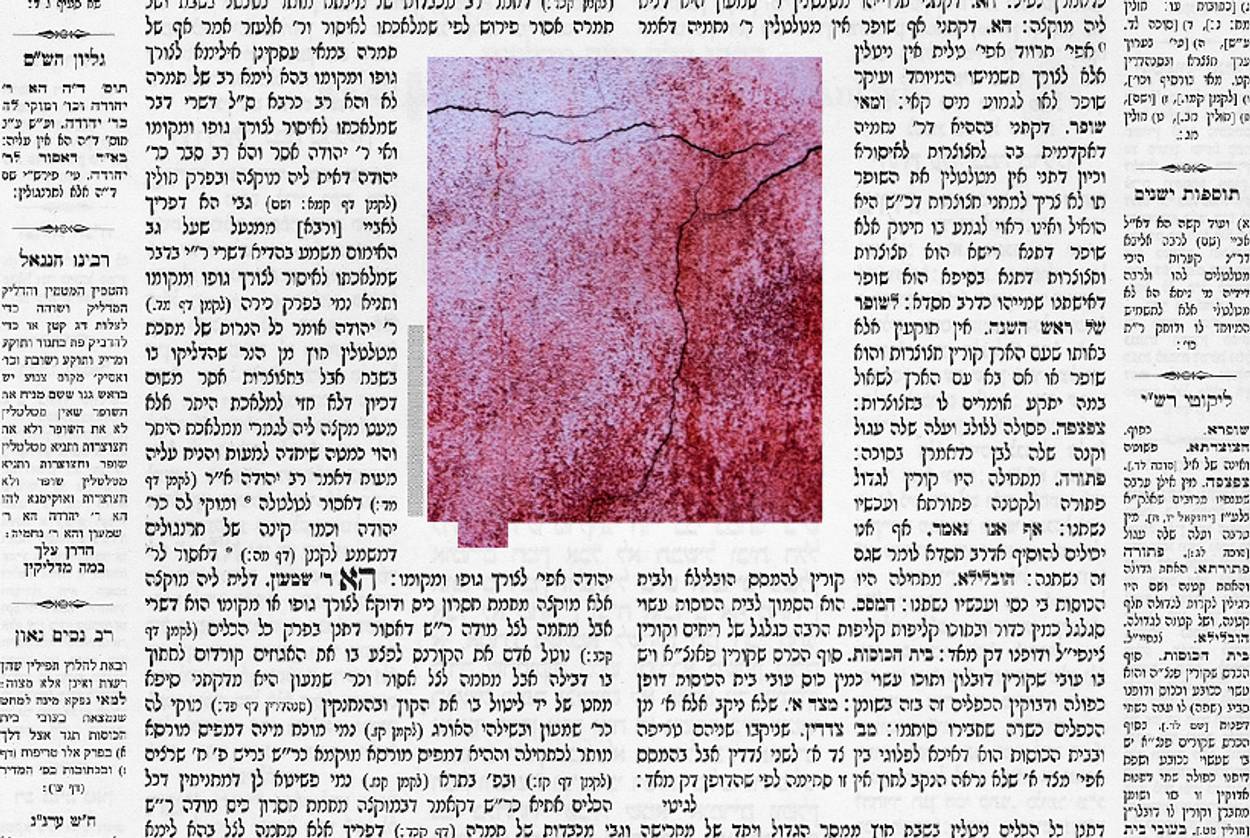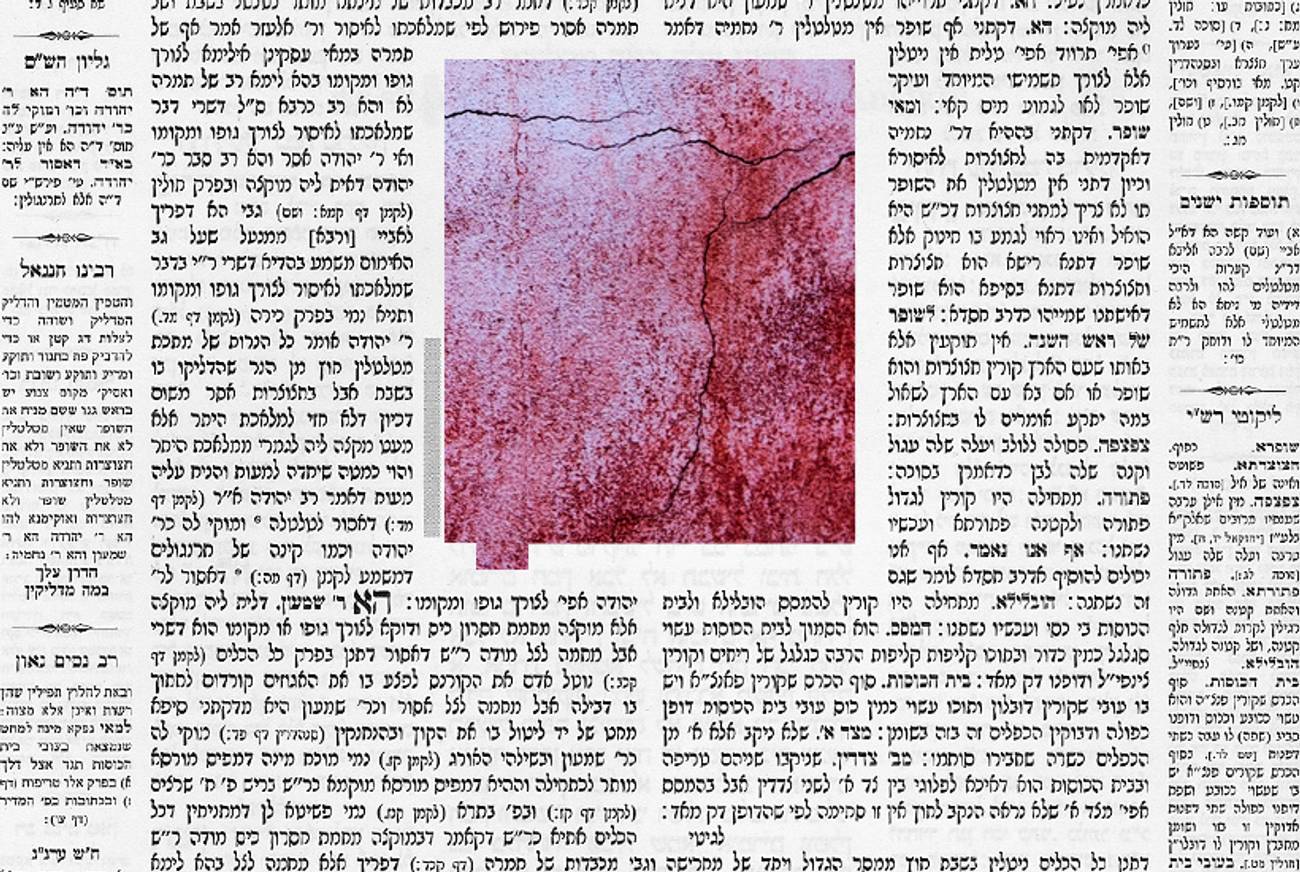The Talmud’s Yom Kippur, With Sacrifice and Blood, Is Nothing Like Jewish Ritual Today
The rabbinic tradition arose from the fact that the Bible doesn’t tell us what we need to know to lead our lives




Literary critic Adam Kirsch is reading a page of Talmud a day, along with Jews around the world.
The Daf Yomi cycle continues to make its way through the second order of the Talmud, Moed, which deals with festivals, the days that make up the rhythm of the Jewish year. So far we have learned about the laws of Shabbat, in Shabbat and Eruvin, and Passover, in Pesachim, as well as the procedure for paying the Temple tax, in Shekalim. (This last is not technically a holiday, but since it happened at the same time every year, it finds a place in Moed.) Now Daf Yomi readers have embarked on a new tractate, Yoma, which deals with the most sacred day of all, Yom Kippur.
But the Yom Kippur we read about in the Talmud is not exactly the Yom Kippur Jews experience today. For the last 2,000 years, the Day of Atonement has been observed with prayer and fasting. But in the days when the Temple stood, the heart of Yom Kippur was an elaborate daylong ritual performed by the high priest, the Kohen Gadol. This involved animal sacrifice, confession of sins, and the sprinkling of blood in the Holy of Holies, the innermost chamber of the Temple; and most of Tractate Yoma is consumed with getting the details of this ceremony exactly right. Unlike Eruvin, then, which is intensely practical in its focus on what ordinary Jews can and can’t do on Shabbat, Yoma is highly abstract. It is about a ceremony that hasn’t been performed for 2,000 years and that even then was performed by just one man out of the whole Jewish people.
Of course, this does not at all lessen the rabbis’ interest in the subject. On the contrary, as we began Chapter 1 last week, we saw two short paragraphs of Mishna give rise to eight pages of Gemara, and counting. After the terse and to-the-point Gemara of the Jerusalem Talmud—whose version of Shekalim we read—the richness and leisurely pace of the Bavli reminded me once again of how the Talmud’s rabbis enjoyed discussion of the law for its own sake. What matters to them is not just getting the law right but understanding why the law says what it says.
Certainly, the Mishna that begins Yoma 2a (the first page of text in every tractate is page 2) does not seem to require much interpretation. It states plainly that seven days before Yom Kippur, the high priest must move from his house to a room in the Temple called the Chamber of Parhedrin (the word, I learn from the Koren Edition’s notes, comes from a Greek word meaning “public official”). This is meant to keep him safe from tumah, ritual impurity, since he must be absolute pure when he performs the Yom Kippur rites. (Specifically, the Gemara makes clear later on, he is avoiding sexual relations with his wife, who may turn out to be menstruating.) Just in case the high priest does prove to be impure, an alternate is appointed to replace him.
This leads to a question that the Mishna addresses. According to Leviticus, the high priest performs the ceremony of atonement “for him and for his house.” In order to have a “house,” that is, a family, he must be married. But what would happen, Rabbi Yehuda wonders, if the high priest’s wife died in the seven days before Yom Kippur? To avoid leaving him wifeless, wouldn’t they have to appoint an alternate wife for the high priest, whom he could marry if the need arose?
This is the kind of unlikely but perfectly logical question that the Talmud loves to pose, in order to make sure that every possible situation is provided for. But in this case, the majority of rabbis decide that Yehuda has gone too far in his concern, and they respond: “If so, there is no end to the matter.” That is, once you start worrying about whether the high priest’s wife might die, you would have to worry that her substitute might die, and so on in an infinite regression. We saw the same phrase—“ein le-devar sof,” “there is no end to the matter”—in Pesachim, when the rabbis discussed the procedure for cleansing a house of chametz. In both cases, pragmatism and a sense of reality win out over theoretical anxieties.
Starting with this simple Mishna, the Gemara begins to weave its complex pattern of interpretation. And as this discussion goes on, it becomes clear that the plenitude of the Gemara, paradoxically, is a result of the scarcity of the rabbis’ actual knowledge. They propose so many answers because they have so many questions. Remember that, by the time the Amoraim came along, the Temple had been gone for three or four centuries. To reconstruct what went on there, they had to rely on oral tradition—the Mishna—and the Bible, which institutes the priestly ceremonies in the books of Exodus and Leviticus. But the Bible is radically insufficient as a book to live by; it simply doesn’t tell us what we need to know to lead our lives. That is why the rabbinic tradition arose, with its founding belief that everything the rabbis taught was handed down from Moses at Sinai. The oral tradition comes to supplement the gaps in the written tradition.
We see this happening right away, when the Gemara on 2a asks: “From where are these matters derived?” Nowhere in the Bible do we read explicitly that the high priest has to be sequestered for seven days prior to Yom Kippur, so how do we know that this is what God requires? According to Rabbi Yochanan, it is because of an analogy with Aaron, the original high priest of the Israelites, who sequestered himself for seven days before inaugurating the Tabernacle.
But how do we know that what happened at the inauguration is supposed to set the pattern for Yom Kippur? It is because of the verse in Leviticus that states: “As has been done this day, so the Lord had commanded to do, to make atonement for you.” It is a familiar principle of Talmudic exegesis that no word in the Bible is there without a purpose; every single word can be used to teach a point of law. In this case, the Talmud points to the seeming repetition of “to do, to make atonement”: Why use both verbs, instead of just one? The answer the Gemara gives is that each verb comes to teach about a different priestly ceremony: “to do” applies to the ritual of the red heifer, whose ashes were used to remove impurity; “to make atonement” refers to Yom Kippur. Before each of these occasions, the high priest must be sequestered for seven days, like Aaron.
The Gemara goes on to entertain a series of challenges to this interpretation. How do we know, the rabbis ask, that “to make atonement” refers to Yom Kippur, rather than to any of the other sacrifices of atonement, the ones offered on regular days or on other holidays? One by one, the rabbis shoot down the other possibilities, finally deciding that only Yom Kippur could be meant here. Along the way—and the discussion takes several pages—other, subsidiary issues arise. On what date, exactly, did Moses receive the Torah from God on Mount Sinai? Was it the sixth of Sivan or the seventh? The relevant passage in Exodus turns out to be surprisingly ambiguous about the order of events. Later, the rabbis ask how Aaron and his sons got dressed when they wore their priestly vestments: Did Moses dress Aaron first and then the sons, or all of them at the same time? And did the belt of the high priest look the same as the belt of an ordinary priest, or was it specially decorated?
Eventually the Gemara comes to discuss the frontplate—a piece of sacred jewelry, worn on the high priest’s forehead, which was inscribed with the name of God. Here it becomes clear that the ritual of atonement, like other sacrifices performed in the Temple, had a strong element of magic about it. The frontplate, we learn, “effects acceptance” for the high priest’s sacrifice, even if that sacrifice turns out to be ritually impure for some reason—indeed, even if the priest knew that it was impure. Simply wearing this object has the power to make the unacceptable acceptable.
And what if the frontplate is broken, or if it falls off the priest’s head—does it still work? There is some disagreement about this; but all the rabbis agree that we must not take literally the biblical commandment that the high priest must wear the frontplate “always.” “Doesn’t he need to enter the bathroom, doesn’t he need to sleep?” the rabbis ask, once again reconciling biblical theory with practical need. The high priest must be able to take off the frontplate; the “always” means only that it “always effects acceptance,” even when he is not wearing it.
Alternatively, “always” means that the high priest should always be aware of the frontplate, “that he should not be distracted from it.” In this, the frontplate is like tefillin: Rabba bar Rav Huna teaches that a man wearing tefillin should touch them once an hour, to be reminded of their presence. Indeed, the rabbis conclude, somewhat surprisingly, that tefillin are actually more important than the frontplate. One might think the opposite was true: After all, there was only one frontplate, and it had ritual magic powers, whereas every Jew can wear tefillin. But as the rabbis point out, God’s name was only written once on the frontplate, whereas it appears many times in the scroll inside the tefillin. It follows that tefillin are even holier—a neat way of suggesting that, even in the absence of the Temple’s sacred paraphernalia, Judaism still offers ways to achieve closeness to God.
***
Like this article? Sign up for our Daily Digest to get Tablet Magazine’s new content in your inbox each morning.
Adam Kirsch is a poet and literary critic, whose books include The People and the Books: 18 Classics of Jewish Literature.
Adam Kirsch is a poet and literary critic, whose books include The People and the Books: 18 Classics of Jewish Literature.